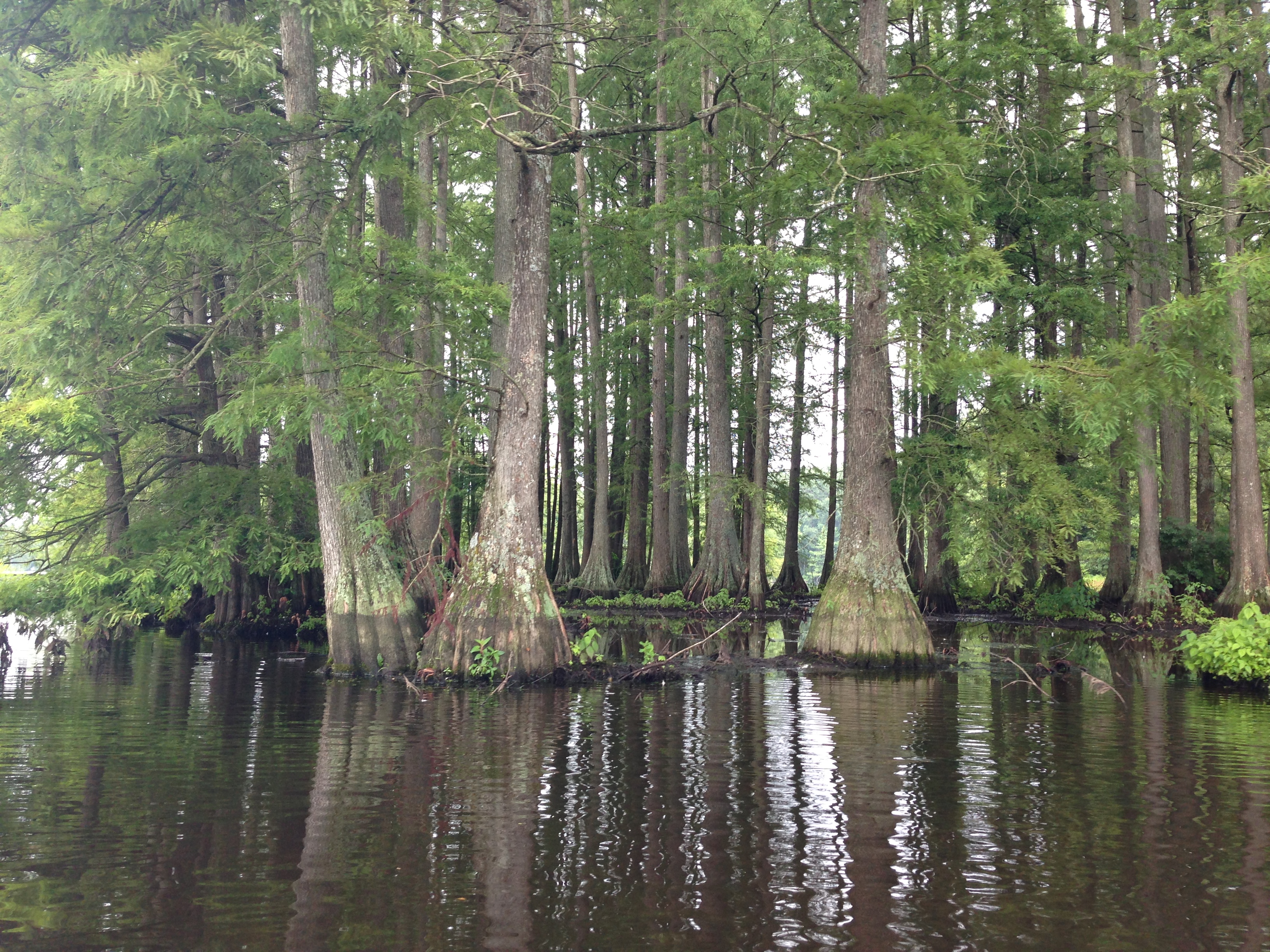Great Cypress Swamp on:
[Wikipedia]
[Google]
[Amazon]
 The Great Cypress Swamp (also known as ''Great Pocomoke Swamp'', ''Cypress Swamp'', or ''Big Cypress Swamp''), is a forested freshwater
The Great Cypress Swamp (also known as ''Great Pocomoke Swamp'', ''Cypress Swamp'', or ''Big Cypress Swamp''), is a forested freshwater
swamp
A swamp is a forested wetland.Keddy, P.A. 2010. Wetland Ecology: Principles and Conservation (2nd edition). Cambridge University Press, Cambridge, UK. 497 p. Swamps are considered to be transition zones because both land and water play a role in ...
located on the Delmarva Peninsula in south Delaware
Delaware ( ) is a state in the Mid-Atlantic region of the United States, bordering Maryland to its south and west; Pennsylvania to its north; and New Jersey and the Atlantic Ocean to its east. The state takes its name from the adjacent Del ...
and southeastern Maryland
Maryland ( ) is a state in the Mid-Atlantic region of the United States. It shares borders with Virginia, West Virginia, and the District of Columbia to its south and west; Pennsylvania to its north; and Delaware and the Atlantic Ocean to ...
. As of 2000, it is the largest contiguous forest on the Delmarva Peninsula.
Located at , it is one of the northernmost of the Bald Cypress swamps common in the southeastern United States ( Battle Creek Cypress Swamp in Calvert County
Calvert County is located in the U.S. state of Maryland. As of the 2020 census, the population was 92,783. Its county seat is Prince Frederick. The county's name is derived from the family name of the Barons of Baltimore, the proprietors of t ...
, Maryland is slightly further north, but much smaller). It covers about , mostly in southern Sussex County, Delaware
Sussex County is located in the southern part of the U.S. state of Delaware, on the Delmarva Peninsula. As of the 2020 census, the population was 237,378. The county seat is Georgetown.
The first European settlement in the state of Delaware w ...
. It is the source of the Pocomoke River
The Pocomoke River stretches approximately U.S. Geological Survey. National Hydrography Dataset high-resolution flowline dataThe National Map, accessed April 1, 2011 from southern Delaware through southeastern Maryland in the United States. At it ...
, which flows south, and Pepper Creek, which flows northeast.
History
The swamp once yielded much cypress timber. Through overharvesting and a disastrouspeat fire
Peat (), also known as turf (), is an accumulation of partially decayed vegetation or organic matter. It is unique to natural areas called peatlands, bogs, mires, moors, or muskegs. The peatland ecosystem covers and is the most efficien ...
in 1930, much of its vegetation was destroyed. One of the fires burned for eight months, leading it to be deemed the "Burnt Swamp" by local residents.
In 1980, Senator Joe Biden, at the request of environmentalists, proposed that the swamp be made into a National Park
A national park is a nature park, natural park in use for conservation (ethic), conservation purposes, created and protected by national governments. Often it is a reserve of natural, semi-natural, or developed land that a sovereign state dec ...
; this plan was met with resistance from local residents concerned about being overwhelmed with large numbers of visitors. When Senator Tom Carper
Thomas Richard Carper (born January 23, 1947) is an American politician and former military officer serving as the Seniority in the United States Senate, senior United States Senate, United States senator from Delaware, having held the seat si ...
revisited the idea of creating a national park in Delaware in 2004, the Cypress Swamp was not considered because of these concerns.
The non-profit organization Delaware Wild Lands
Delaware Wild Lands, Inc. is a private, tax-exempt non-profit organization dedicated to the conservation and preservation of natural areas through the acquisition and management of strategic parcels of land.
Background
The organization was establi ...
manages the swamp and has undertaken efforts to replant bald cypress trees there.
Ecological value
Birds
The swamp is home to 73 breeding species of birds. The most abundant species in the swamp are theworm-eating warbler
The worm-eating warbler (''Helmitheros vermivorum'') is a small New World warbler that breeds in the Eastern United States and migrates to southern Mexico, the Caribbean, and Central America for the winter.
Taxonomy
The worm-eating warbler is ...
and brown-headed cowbird. The swamp also contains two regionally rare species, Swainson's warbler and black-throated green warbler. eBird has records of at least 94 species observed in the swamp, including some found during migration which do not breed there.
See also
*Pocomoke River
The Pocomoke River stretches approximately U.S. Geological Survey. National Hydrography Dataset high-resolution flowline dataThe National Map, accessed April 1, 2011 from southern Delaware through southeastern Maryland in the United States. At it ...
References
External links
* * *{{cite web , url=http://www.hometownlocator.com/State/DisplayStateFeatures.cfm?FeatureType=swamp&StateCode=MD , title=Maryland Swamps , publisher=HomeTownLocator , accessdate=2008-01-06 Swamps of Delaware Swamps of Maryland Landforms of Wicomico County, Maryland Landforms of Worcester County, Maryland Landforms of Sussex County, Delaware